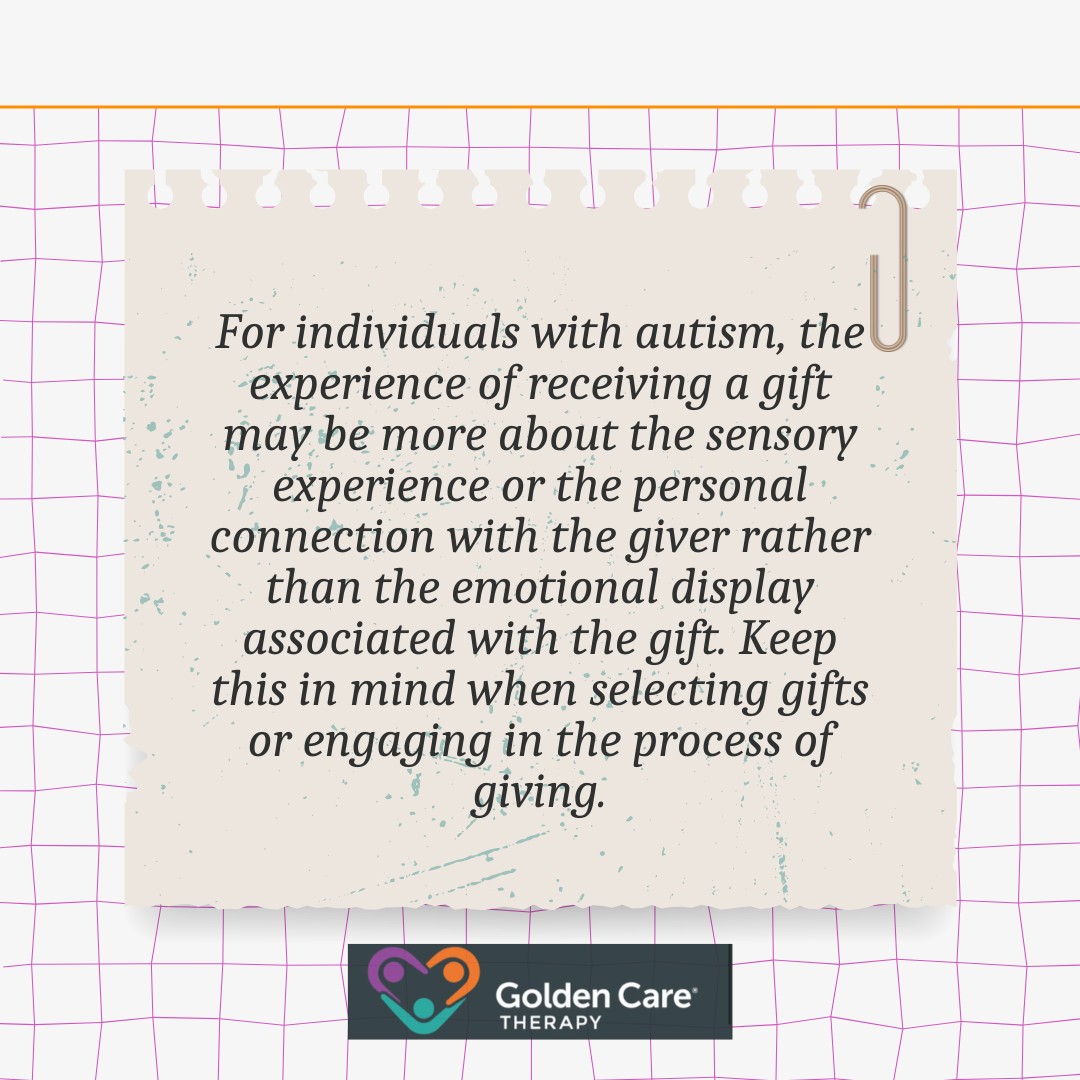Gift-giving is a cherished tradition in many cultures, symbolizing affection, gratitude, and celebration. However, for individuals on the autism spectrum, the act of receiving or giving gifts can be fraught with challenges. The unique social and sensory experiences that characterize autism can make the process of gift-giving both overwhelming and rewarding. For many, these challenges are linked to ASD symptoms, which may include heightened sensitivities to sensory input or difficulties with social interactions, further complicating the experience.
Understanding these challenges and providing thoughtful strategies can help caregivers, parents, and friends navigate this aspect of social interaction with ease and empathy.
The Challenges of Gift Giving in Autism
Gift-giving typically involves social cues, expectations, and a certain level of reciprocity. For individuals on the autism spectrum, these social norms can be challenging to navigate.
Autism often impacts social communication and understanding, making it difficult for individuals to gauge the appropriate time to give or receive gifts, understand the social dynamics behind the gesture, or express gratitude in expected ways.
For example, a child with autism may not know how to act when receiving a gift, leading to confusion or anxiety.
Similarly, they may not understand why they are supposed to give a gift to someone else on a special occasion. These challenges arise from difficulties with social cues, which are often taken for granted in neurotypical interactions.

Sensory Sensitivities
Many individuals on the autism spectrum experience heightened sensory sensitivities, meaning they may be more sensitive to textures, smells, sounds, or even the look of a gift. A gift that might seem perfect to someone else could overwhelm or distress a person with autism due to its sensory properties.
For instance, a toy that makes loud noises or has an unusual texture might be upsetting, despite being well-intended.
The sensory aspects of gifts, such as wrapping paper, ribbons, or packaging, can also present challenges. For some individuals, the crinkling of wrapping paper might be startling, or the bright colors might be overstimulating.
Therefore, when selecting or giving a gift, it’s important to consider these sensory preferences or aversions to ensure a more comfortable experience.
5 Strategies for Gift-Giving in Autism
As far as gift-giving for someone with autism goes, thoughtful consideration of their individual needs and preferences can make all the difference. That said, here are some tips that will not only ensure the gift is meaningful but also cater to their unique sensory and emotional needs:
Know the Recipient’s Preferences
Before you buy a gift for someone with autism, you have to consider their likes and dislikes, as well as their sensory sensitivities. Some individuals may prefer particular textures, colors, or types of objects.
For example, a child might be interested in items related to a special interest or hobby, such as trains, animals, or video games. Knowing these preferences ensures that the gift is both meaningful and practical.
In addition to personal interests, consider the recipient’s sensory sensitivities. Opt for gifts that are calm and non-overstimulating. If purchasing a toy, make sure it’s not too loud or overly bright, and choose materials that are soft or non-irritating.
Simplify the Process
Gift-giving can be overwhelming, especially if the individual struggles with social communication or has sensory sensitivities.
To make the process easier, consider simplifying the experience. For example, you can avoid complex packaging that might be confusing or distressing. You can also use clear and direct language when explaining why the gift is being given and what it represents.
Some individuals with autism may appreciate having fewer choices when it comes to picking out a gift. Instead of overwhelming them with a variety of options, try narrowing down the choices to a select few that match their preferences.
Use Visual Supports
Many individuals with autism respond well to visual supports. These can help explain the process of gift-giving, reduce anxiety, and provide clarity about expectations.
For instance, visual schedules or social stories can be used to walk through the steps of gift-giving, helping the individual understand what is expected at each stage, from receiving the gift to expressing gratitude.
A social story might include visuals that show a person giving a gift, receiving a gift, and saying “thank you.” This strategy can help individuals with autism better understand the social nuances of the exchange and reduce feelings of uncertainty or stress.
Allow for Individual Responses
It’s important to recognize that individuals on the autism spectrum may not always respond to gifts in the way others expect. Some may not show excitement or gratitude immediately, while others may react in unexpected ways.
It’s essential to allow for a range of responses and avoid placing pressure on the individual to react in a specific manner.
Some individuals may need more time to process the gift and its significance. Others may prefer to engage with the gift privately rather than with others present. Being understanding and patient with these responses is key to fostering positive experiences around gift-giving.
Focus on the Process, Not the Outcome
While the act of giving a gift is often intended to create a meaningful exchange, it’s essential to focus on the process rather than the outcome. If the recipient doesn’t show the expected level of excitement or gratitude, don’t take it personally.
The goal is to create an opportunity for connection and understanding, even if the response isn’t exactly what you envisioned.

Final Thoughts
Gift-giving in autism can be a deeply personal and rewarding experience, but it requires understanding and thoughtfulness. By considering the sensory needs, interests, and communication styles of individuals on the spectrum, we can ensure that gift-giving becomes a positive and enjoyable part of our relationships with them.
Whether you’re a parent, caregiver, or friend, taking the time to understand the challenges and strategies for successful gift-giving can help foster connections and create meaningful experiences for everyone involved.
At Golden Care Therapy, we offer high-quality ABA therapy in New York, New Jersey, Indiana, Georgia, and Florida. Our team is dedicated to providing personalized care that empowers families and helps children thrive in their unique journeys. Get in touch today to learn more about how we can support you.



